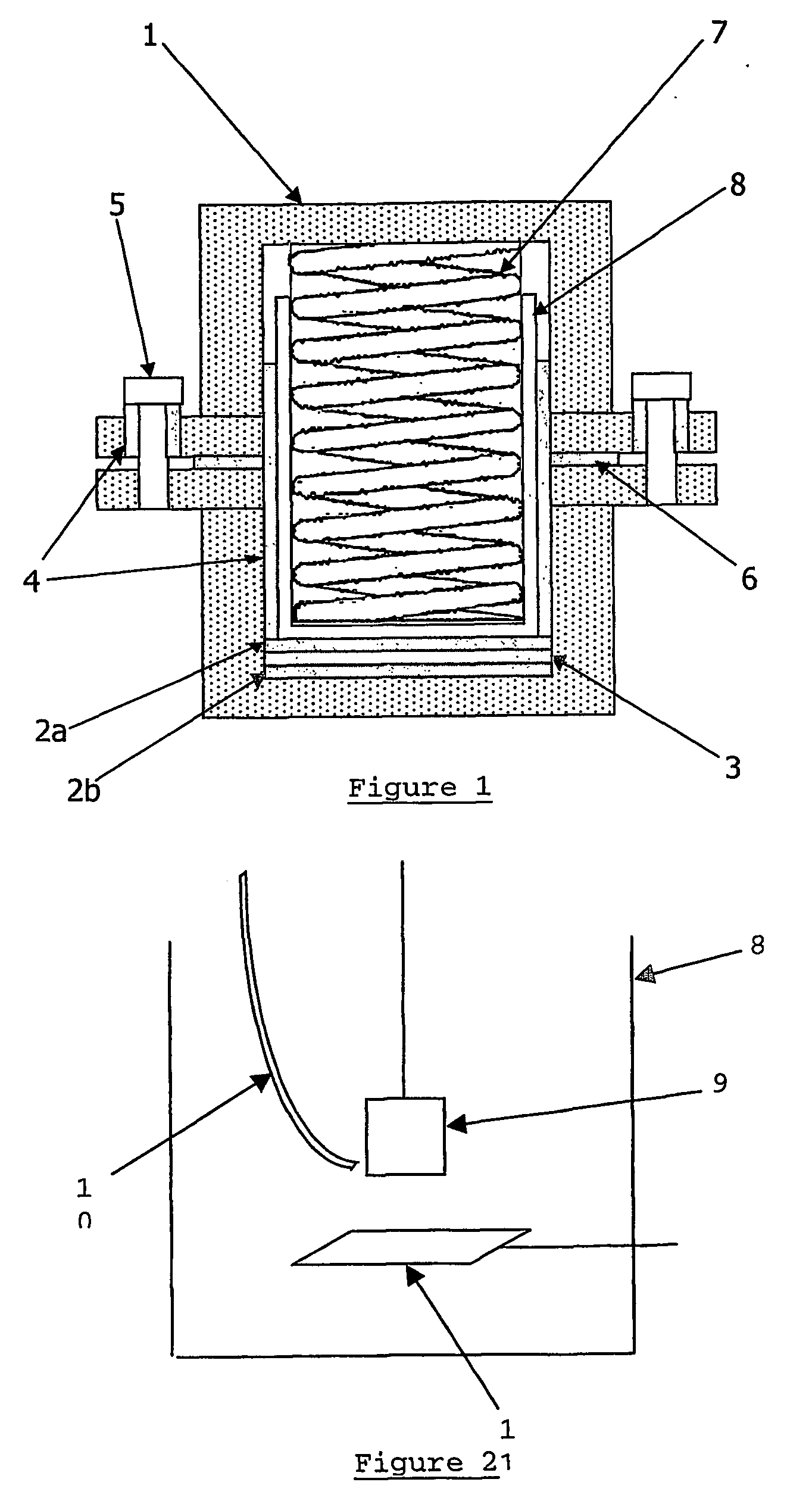Conductive polyamine-based electrolyte
a polyamine-based, electrolyte technology, applied in the direction of electrolyte capacitors, non-aqueous electrolyte cells, electrochemical generators, etc., can solve the problems of limiting the cycle life, fire and explosion, and the tendency of lithium metal electrodes to develop dendrite surfaces
- Summary
- Abstract
- Description
- Claims
- Application Information
AI Technical Summary
Benefits of technology
Problems solved by technology
Method used
Image
Examples
example 1
[0163] The electrochemical stability of a 0.5 mol / kg lithium bis(trifluoromethanesulfonyl)amide in methyl butyl pyrrolidinium bis (trifluoromethanesulfonyl)amide on a lithium electrode deposited on to a Ni substrate is determined by cyclic voltammetry using the 3-electrode cell described above (with Ni working electrode). The test was conducted at 100 mVs−1 and at ambient temperature. The results of the test are illustrated in FIG. 3. High reversibility is observed, with no indication of degradation of the electrolyte.
example 2
[0164] To show the ability of the electrolyte to reversibly cycle lithium a cycling efficiency experiment was conducted. A solution of 0.5 mol / kg lithium bis(trifluoromethanesulfonyl)amide in methyl butyl pyrrolidinium bis (trifluoromethanesulfonyl)amide was made up and a cycling efficiency experiment carried out at 0.25 mAcm−2 and 1 Ccm−2 (0.25 Ccm−2 cycled fraction) on a Pt electrode at 50° C. The electrode cycles for 63 cycles (FIG. 4), indicating a cycling efficiency of 94.0%.
example 3
[0165] The test of example 2 is repeated on a platinum substrate at the higher rate of 1.0 mAcm−2 and 1 Ccm−2 (0.25 Ccm−2 cycled fraction). The electrode cycles for 430 cycles (FIG. 5), indicating a cycling efficiency of 99.1%. Because of the large number of cycles, only the maximum deposition (reduction) and dissolution (oxidation) potentials for each cycle are shown.
PUM
| Property | Measurement | Unit |
|---|---|---|
| boiling point | aaaaa | aaaaa |
| temperature | aaaaa | aaaaa |
| melting points | aaaaa | aaaaa |
Abstract
Description
Claims
Application Information
 Login to View More
Login to View More - R&D
- Intellectual Property
- Life Sciences
- Materials
- Tech Scout
- Unparalleled Data Quality
- Higher Quality Content
- 60% Fewer Hallucinations
Browse by: Latest US Patents, China's latest patents, Technical Efficacy Thesaurus, Application Domain, Technology Topic, Popular Technical Reports.
© 2025 PatSnap. All rights reserved.Legal|Privacy policy|Modern Slavery Act Transparency Statement|Sitemap|About US| Contact US: help@patsnap.com



